Around the classrooms
Science
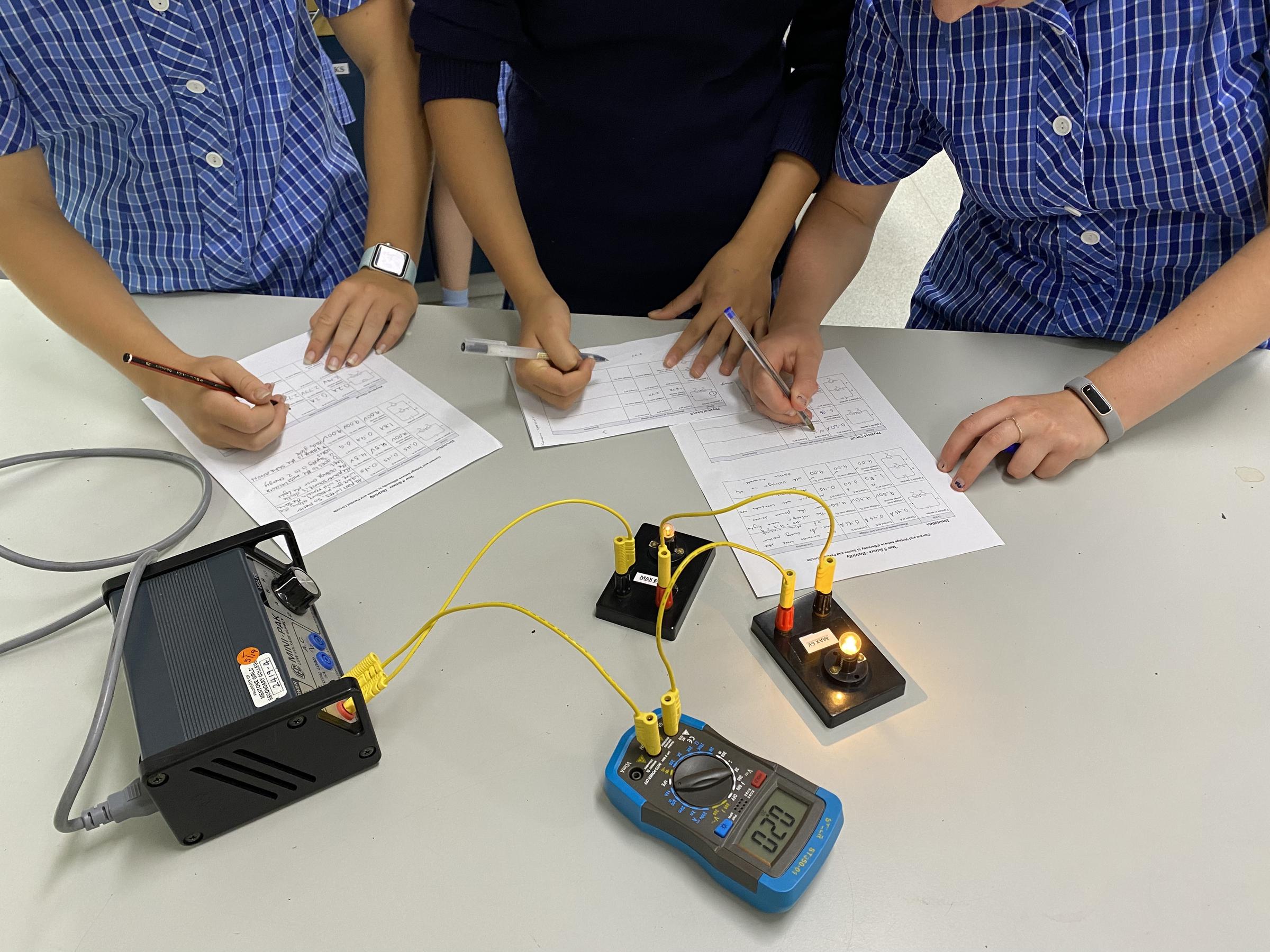
Around the classrooms
Science
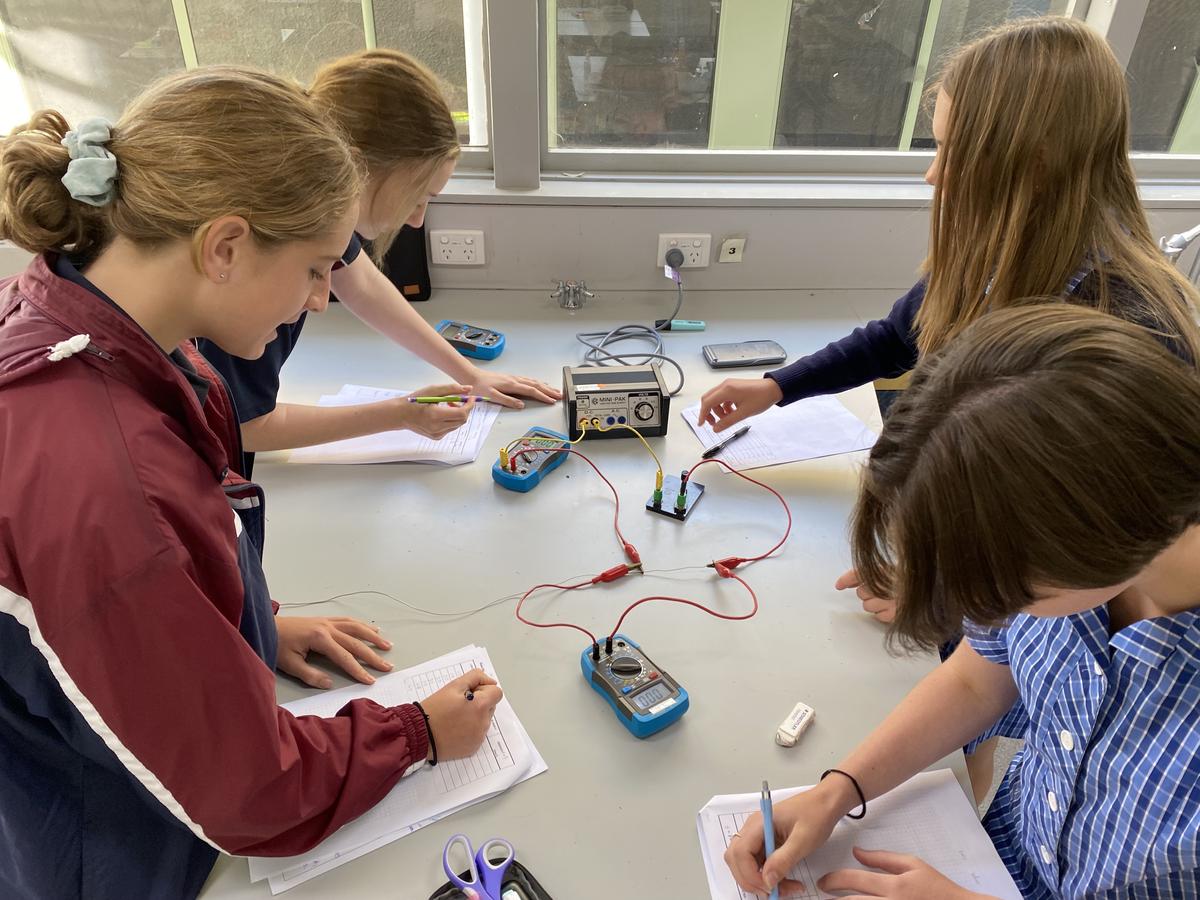

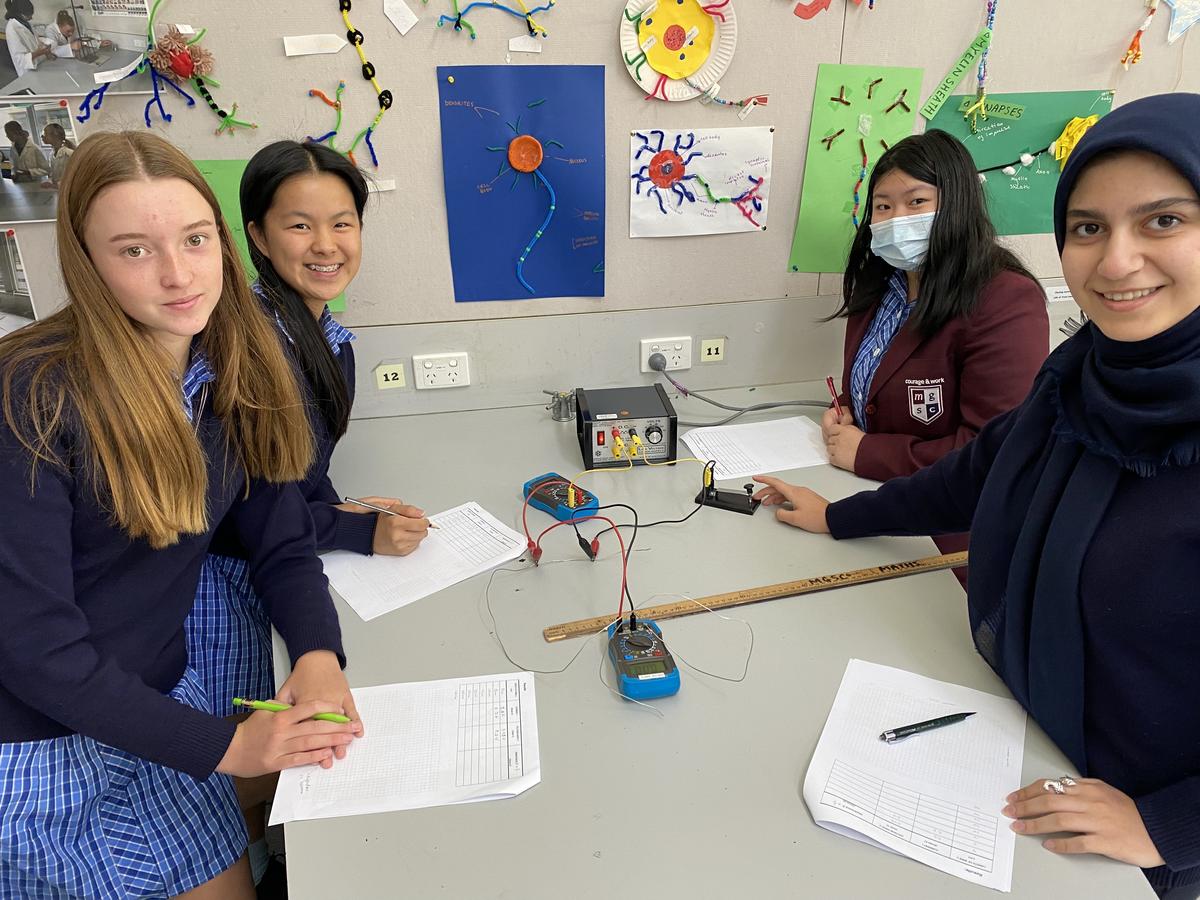



So far this year in science we have completed a variety of different topics, but my personal favourite and many others I’m sure of was electricity. In this year's electricity topic we learnt how to properly setup parallel and series circuits, draw diagrams of each setup we made and learnt about current and voltage within the circuits. You’re probably reading this thinking how boring electricity is, and trust me when I say that the entirety of 9B thought it was going to be boring too, but it was the opposite of boring. We learnt so much, and had fun whilst doing so. Shocking right? Anyway, in this photo on the right you can see Mahdis, Yolanda and I building a circuit and writing down our results to soon turn into a graph or a diagram. In the other picture the whole class is doing a life sized version of a circuit. 2 people are holding containers and everyone else are electrons walking throughout the circuit and giving jelly beans to the people with the containers. The jelly beans are representing the voltage and the containers are representing lights. As the lights receive the jelly beans they turn on. And that's how an electricity circuit works.
In conclusion we really enjoyed doing electricity in science, and I know that 9B and most of the other classes are probably just happy that term 1 is over. We can't wait for term 2 science!
Stella Porter
I enjoyed this topic and how it involved lots of trial and error with the pracs and experimenting with the circuits. Electricity isn't my favorite topic but the way we learned it made it more enjoyable and easy to pick up. The different ways electricity is used in the world and in our case circuits, was interesting!
Hana Pastelis
I didn't know much about electricity before doing this topic but after doing all the pracs and theory lessons i have a much bigger understanding of it! Learning about the circuits was fun and using formulas and incorporating them into the CAT was interesting too!
Maia Bates
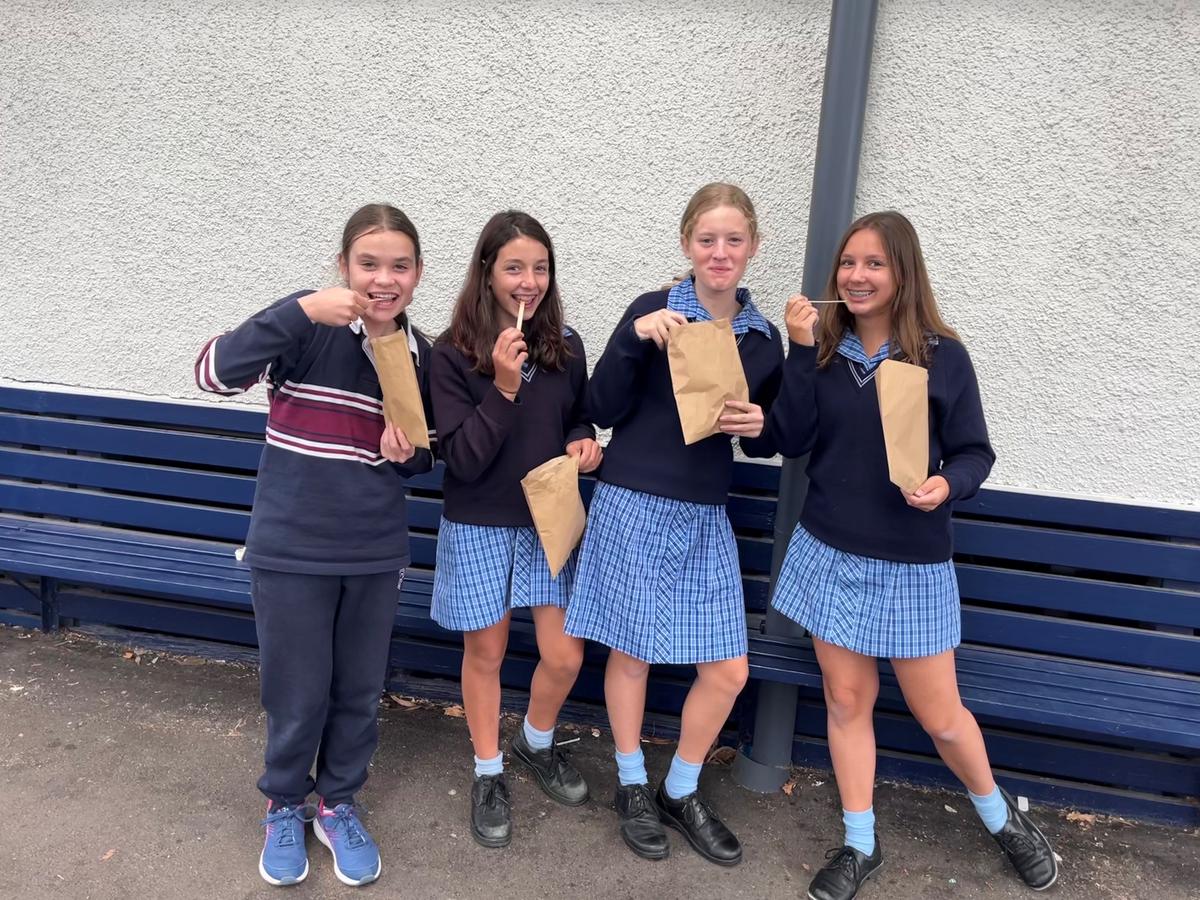

On Tuesday in science with Ms Erwin, our class, 8B made sherbet as a fun task in relation to the topic we are currently learning, which is the Digestive system. We made the sherbet from citric acid, bicarbonate soda, jelly crystals (optional), and icing sugar. We measured all of our ingredients before adding them into a paper bag and mixed them together by shaking it up. We then ate our sherbet for the remainder of the lesson, all while still picturing the process of digestion from a video that we had just previously watched. This activity was intended for fun, as well as strengthening our knowledge and getting us to think about what was happening inside us as we digested the sherbet.
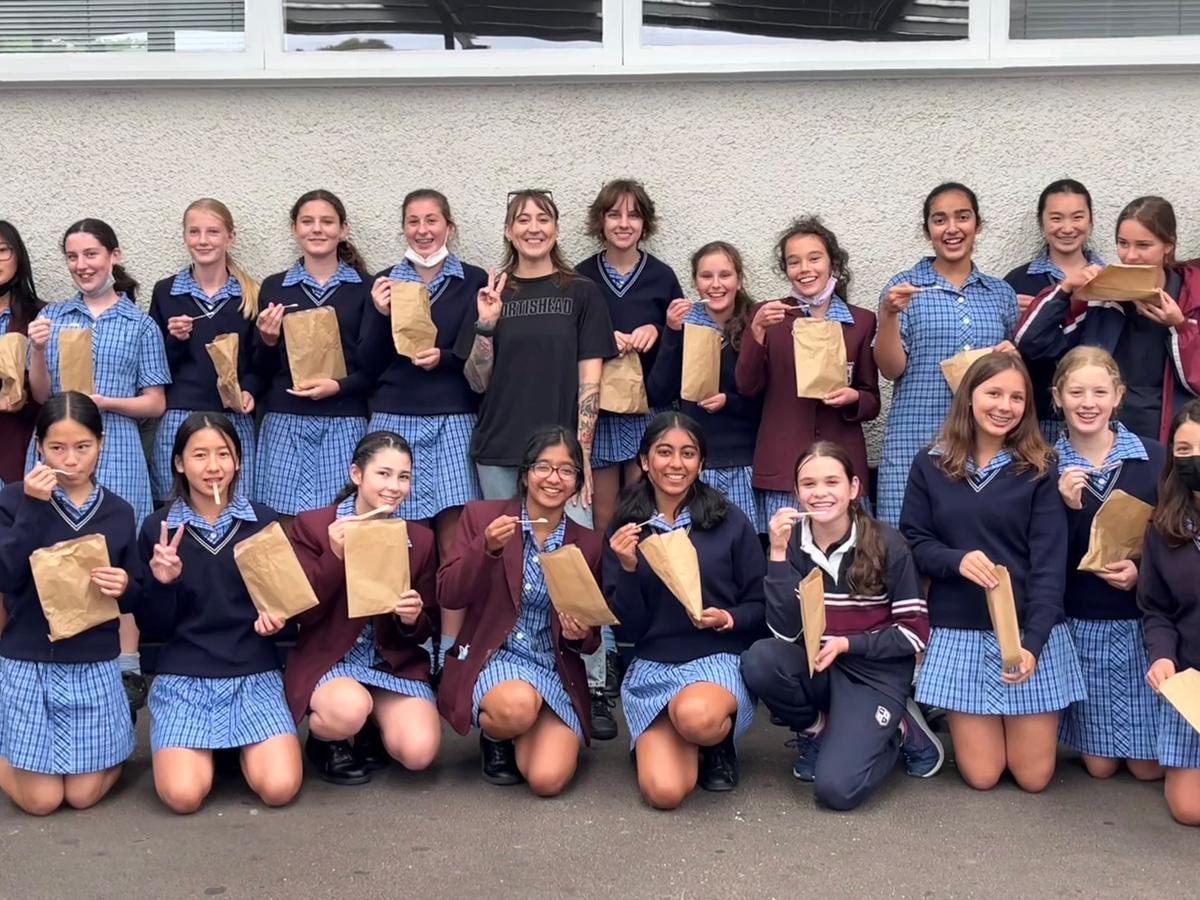

Sherbet travelling through the Digestive System


In anticipation of consuming sherbet, glands in your mouth involuntarily begin to secrete saliva. Once the sherbet is released, it combines with the saliva to turn food into a moist clump called the bolus. Enzymes (which speed up a chemical reaction) in the saliva, break down any starch, then the sherbet travels its way to the entrance of a 25cm long tube, called the oesophagus. The food travels down through the oesophagus until it reaches the stomach. Nerves in the esophageal tissue sense the bolus, and then triggers peristalsis (a series of muscular contractions) and ultimately propels the sherbet into the stomach whereby the muscular stomach walls break the bolus into smaller pieces. Hormones, discharged by cells in the stomach lining, trigger the release of acids and enzyme-rich juices that start to dissolve the sherbet and break down its proteins - these hormones also alert the gallbladder, pancreas and liver to produce digestive juices, and transfer bile (a greenish liquid that digests fat ) to prepare for the next stage. After the sherbet spends three hours inside the stomach, it becomes a froth-like liquid called chyme, ready to move into the small intestine. The liver produces bile, which is received by the gallbladder and then excreted into the first portion of the small intestine. At this stage the bile dissolves the fats in the chyme in order to be easily digested by the pancreatic intestinal juices that are now present - these juices break down the fat molecules into fatty acids and glycerol for easier absorption into the body which occurs in the lower sections of the small intestine, and are coated with many tiny projections called villi. These create a massive surface area for more molecule absorption. Now there is left over fiber, water and dead cells from the chyme, left over from digestion making it into the large intestine (also known as the colon). The body drains out most of the remaining fluid, what is left is a mass called stool. The colon compresses this byproduct into a small pouch named the rectum, this is where nerves sense the stool expanding and tell the body exactly when it’s time to excrete the waste. The byproducts enter the anus and the sherbet's long journey, lasting between 30 and 40 hours, has come to an end.
Emelia Bell and Eva Brennan